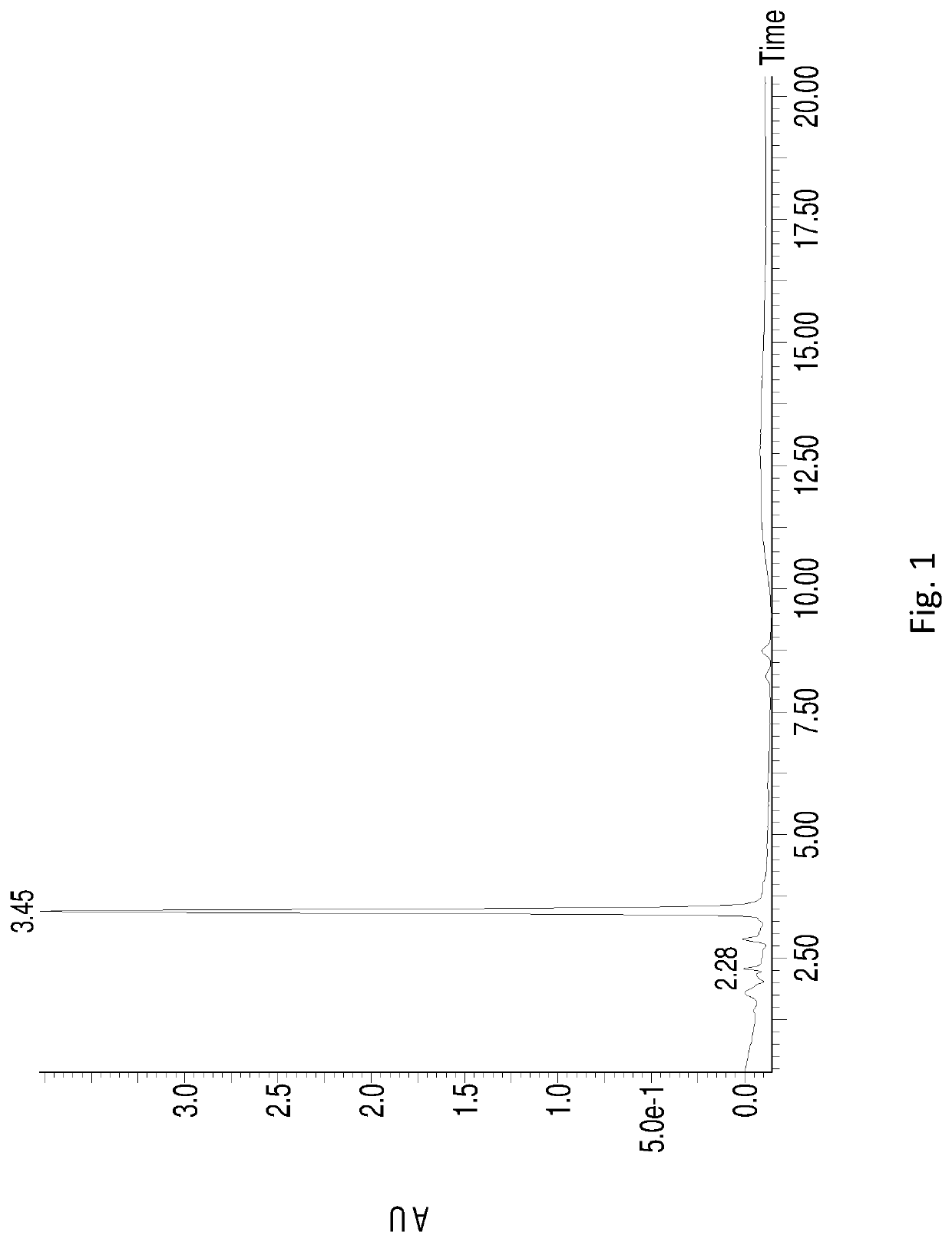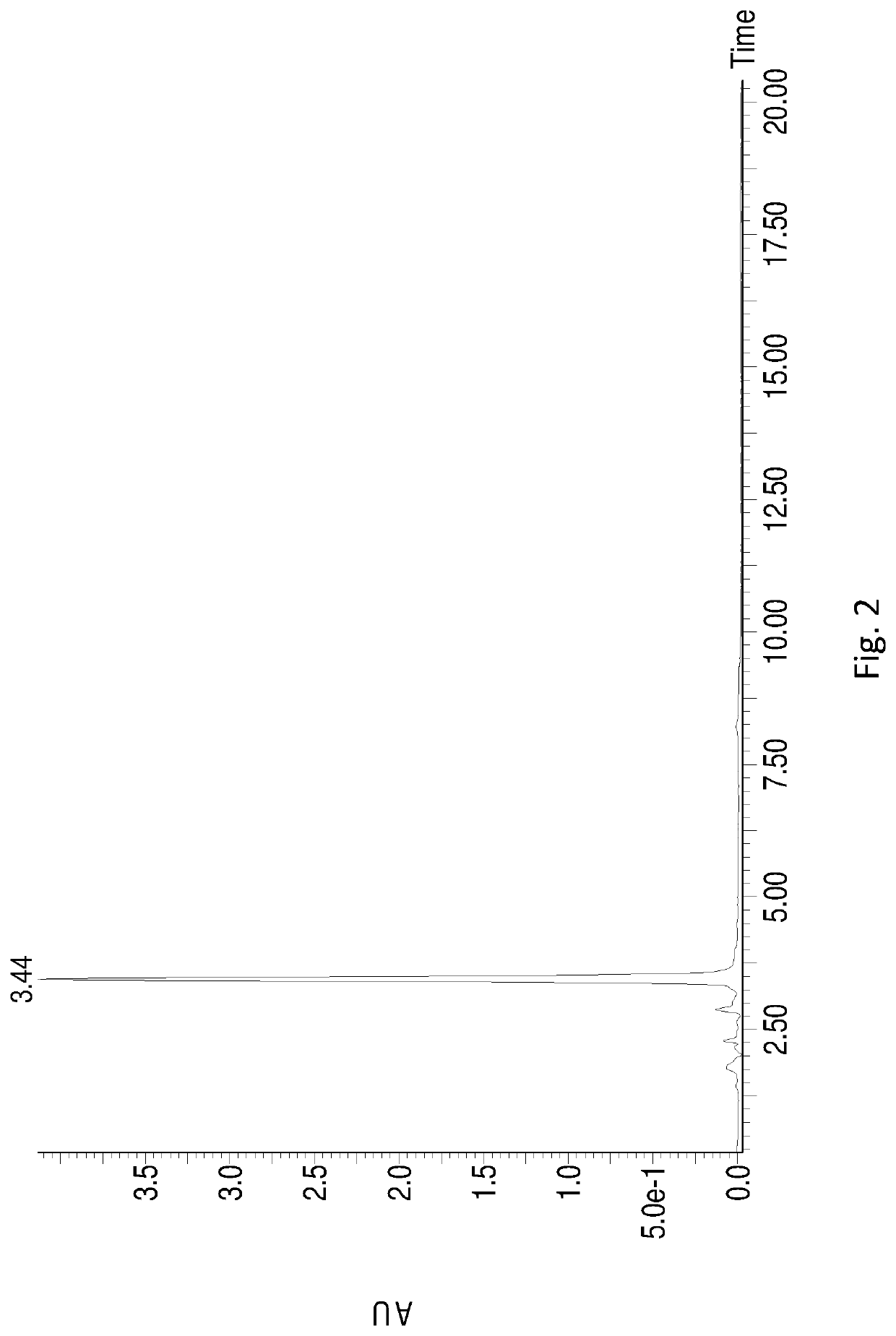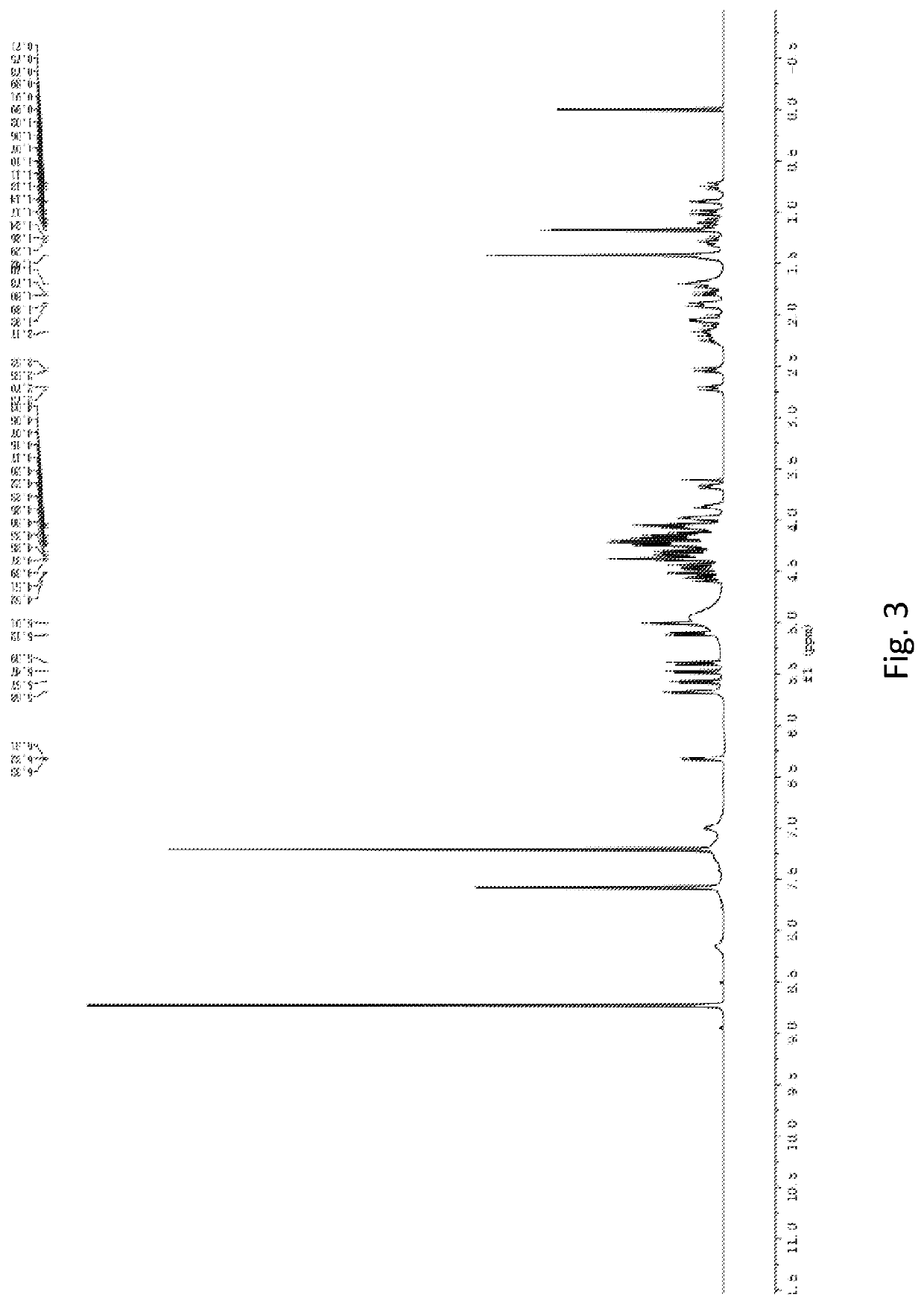Method of converting RB to RD by using cutinase under stepwise changing temperatures
a technology of rb and rd, which is applied in the field of biosynthesis of organic compounds, can solve the problems of difficult lipase enzymatic esterification,
- Summary
- Abstract
- Description
- Claims
- Application Information
AI Technical Summary
Benefits of technology
Problems solved by technology
Method used
Image
Examples
example 1
[0053]RB was dissolved in dimethyl sulfoxide (DMSO) containing 0.03% (w / w) pH 6.0 phosphate buffer to 10 g / L together with sophorose (stoichiometric to total RB), and 400 U / g cutinase from Thermobifida fusca was added to the substrate at 55° C. The mixture obtained above was well mixed and heated up to 70° C. to react for 0.5-1 hr. 20 g / L RB was then replenished and the reaction was continued at 60° C. for another 1 hr, and another 50 g / L RB was replenished and the reaction was continued at 60° C. for 10 hr. After that, 4A molecular sieve was used to remove water, and the solvent was removed by vacuum distillation. The remaining mixture was recrystallized in aqueous methanol solution (90%) for 2-3 times to obtain the white crystal RD. The mass spectrometric data of the product is shown in Table 1, which indicates that the final product is RD. HPLC chromatogram of the final product (see FIG. 2) indicates that RD produced by this method is in high purity. The final yield of RD was 56%...
example 2
[0055]RB was dissolved in DMF containing 0.06% (w / w) pH 6.0 phosphate buffer to 20 g / L together with sophorose (stoichiometric to total RA), and 100 U / g cutinase from Thermobifida fusca was added to the substrate at 55° C. The mixture obtained above was mixed well and heated up to 70° C. to react for 1 hr. 20 g / L RB was replenished and the reaction was continued at 60° C. for 1 hr, and 30 g / L RB was replenished and the reaction was continued at 60° C. for 15 hr. 4A molecular sieve was used to remove water, and the solvent was removed by vacuum distillation. The remaining mixture was recrystallized in aqueous methanol solution (90%) for 3 times to obtain the white crystal RD. The production yield of RD was 49.1% and purity was 98.7%.
example 3
[0056]RB was dissolved in methanol containing 0.3% (w / w) pH 6.0 phosphate buffer to 20 g / L together with sophorose (stoichiometric to total RA), and 30 U / g RB cutinase from Thermobifida fusca was added to the substrate at 55° C. The mixture obtained above was well mixed and heated up to 70° C. to react for 1 hr. 20 g / L RB was replenished and the reaction was continued at 60° C. for 1 hr. RB was replenished again with 30 g / L and the reaction was continued at 60° C. for 10 hr. 4A molecular sieve was used to remove water, and the solvent was removed by vacuum distillation. The remaining mixture was recrystallized in methanol solution (90%) 3 times to get the white RD. The production yield of RD was 50.2% and purity was 98.4%.
PUM
| Property | Measurement | Unit |
|---|---|---|
| concentration | aaaaa | aaaaa |
| pH | aaaaa | aaaaa |
| temperature | aaaaa | aaaaa |
Abstract
Description
Claims
Application Information
 Login to View More
Login to View More - R&D
- Intellectual Property
- Life Sciences
- Materials
- Tech Scout
- Unparalleled Data Quality
- Higher Quality Content
- 60% Fewer Hallucinations
Browse by: Latest US Patents, China's latest patents, Technical Efficacy Thesaurus, Application Domain, Technology Topic, Popular Technical Reports.
© 2025 PatSnap. All rights reserved.Legal|Privacy policy|Modern Slavery Act Transparency Statement|Sitemap|About US| Contact US: help@patsnap.com



